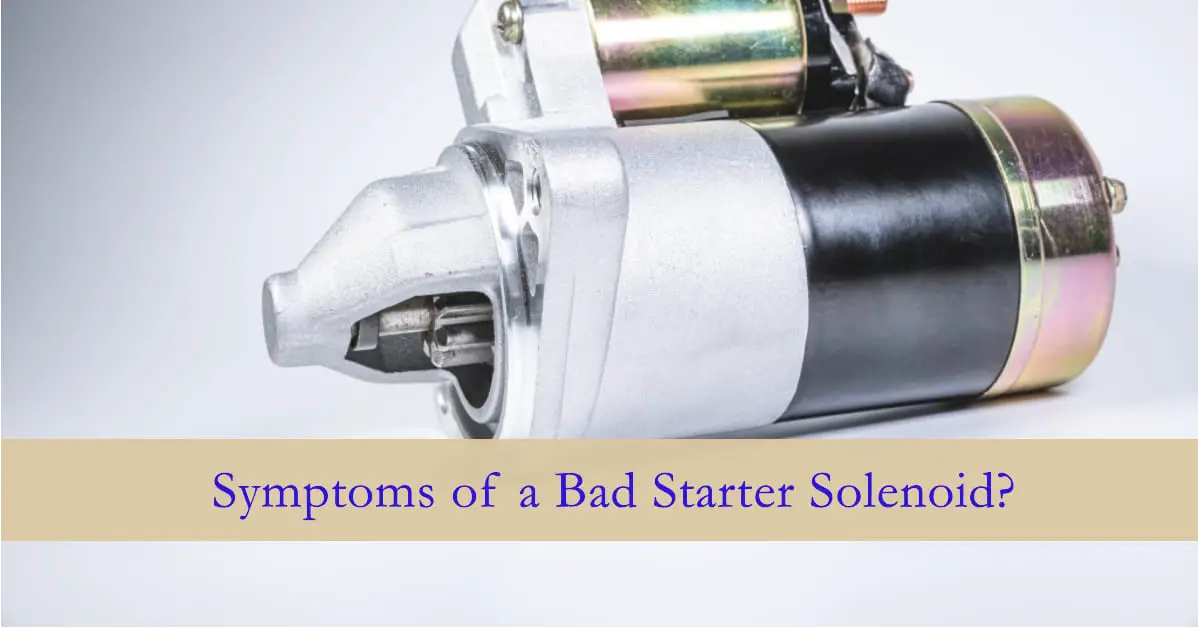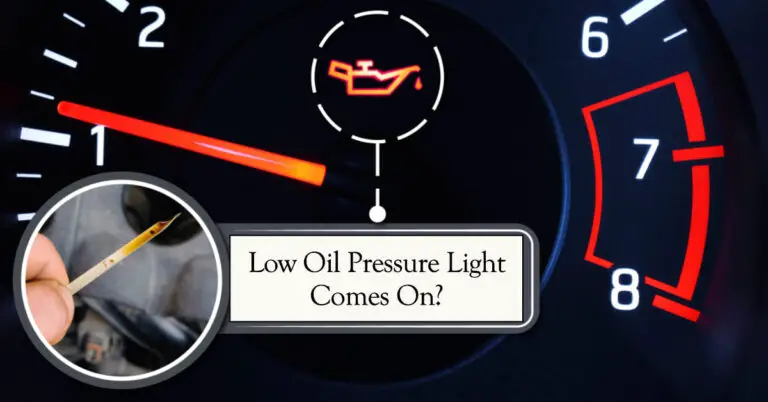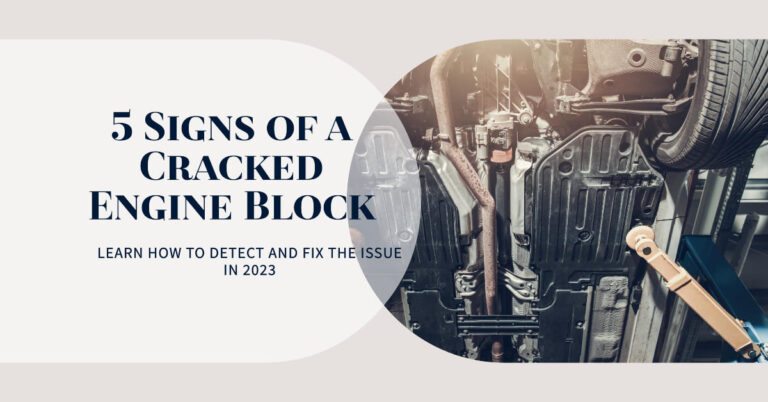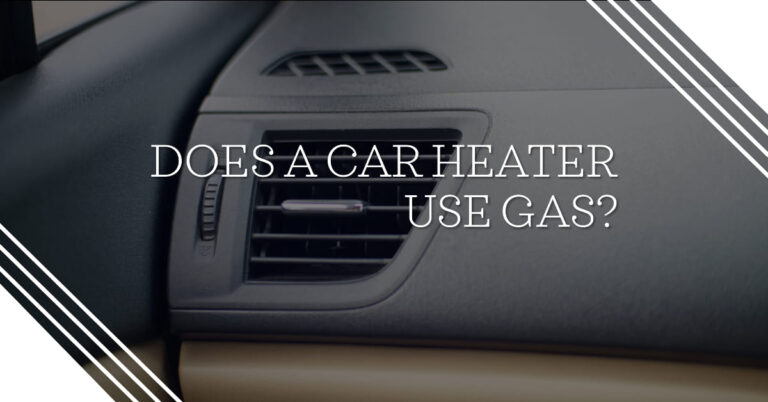Symptoms of a Bad Starter Solenoid: Here’s How to Fix

Have you ever turned the key in your ignition, only to be met with an infuriating silence instead of the sweet rumble of your engine firing up? Or maybe your car struggles to start, the engine cranking weakly before finally catching. Annoyingly intermittent starting troubles can leave you stranded at the worst moments too.
If you’ve dealt with any of these issues, your starter solenoid could be the culprit. But how can you know for sure?
In short – There are several key symptoms that point to a bad or failing starter solenoid as the source of your no-start or hard-start problems. Paying attention to the specific signs can help you diagnose the issue and get your car back on the road.
This small component plays an outsized role in activating your starting system, so when it fails, your engine refuses to turn over. In this comprehensive guide, we’ll explore the ins and outs of the starter solenoid – from its function and location to troubleshooting the symptoms of a bad one. Read on to get a handle on how this humble part enables your car to start, learn how to test it yourself, determine if replacement is needed, and more. Let’s first unpack what exactly the starter solenoid is and why it’s integral to igniting your engine.
Table of Contents
What is a Starter Solenoid and What Does It Do?
You probably don’t give much thought to the starter solenoid when your car starts up normally. But when your engine won’t crank or struggles to turn over, this small component often factors into the problem.
The starter solenoid is an electro-mechanical device that engages the starter motor to crank the engine when you turn the ignition key. It acts as a powerful electric relay, receiving a low-current signal from the ignition switch and responding by sending a high-current jolt to the starter to get it spinning.
Essentially, it’s the middleman that allows your ignition key to activate the starter. The solenoid takes the small electric current from the battery delivered to the ignition cylinder and applies it to the powerful starter motor. This allows your engine to turn over and start when you turn the key.
An unsung hero in your starting system, the solenoid is mounted directly on top of the starter motor. It consists of a coil wound around an iron frame that creates a magnetic field to move the solenoid’s plunger. When you turn the key, the coil is energized, causing the plunger to pull in. This pushes the starter drive gear out to mesh with the flywheel, cranking the engine.
If the solenoid fails to engage due to mechanical or electrical issues, your engine won’t turn over. That’s why paying attention to symptoms of a bad starter solenoid is key to diagnosing no-start problems.
Main Symptoms Your Starter Solenoid is Failing
Since the starter solenoid plays such a crucial part in activating the starter motor to ignite your engine, issues with it will manifest in very specific ways. Here are the most common signs that your starter solenoid is malfunctioning:
1. The Engine Won’t Crank at All When Turning the Key
The number one symptom of a bad starter solenoid is a complete failure of your engine to turn over when you engage the ignition. You’ll turn the key and instead of the familiar cranking sound, you’re met with silence or a faint click.
This happens because the solenoid is unable to receive the electrical signal from the key and activate the starter motor. Its contacts may be corroded or burnt out, its coil damaged, or plunger stuck, preventing it from closing the circuit.
Without the solenoid sending juice to the starter, your engine won’t rotate and start. You may also hear a rapid click, click, click from the solenoid as it fails to work properly.
2. Intermittent Starting Issues – Sometimes Works, Sometimes Doesn’t
If your car only starts sometimes and fails to turn over at other times, that points to an intermittently malfunctioning solenoid.
This on-again-off-again starting is incredibly frustrating. When this happens, the starter solenoid is making a poor electrical connection internally due to dirt, corrosion, or mechanical wear.
Inconsistent contact intermittently engages the starter, so your engine only cranks sporadically. It may start fine one moment, then leave you stranded the next, which signals flaky solenoid contact.
3. Weak Churning or Slow Cranking When Trying to Start
A starter solenoid on its way out can also cause your engine to crank slower than normal, with weak turnover.
You’ll notice sluggish starting as you turn the key, like the battery is low. But a slow cranking that gradually speeds up is actually caused by the solenoid failing to deliver adequate voltage to the starter motor.
This insufficient power results in a slow churning sound as you try to start your car. The engine eventually catches once the starter gets up to speed. But the slow turnover points to solenoid problems.
4. Loud Clicking Noise From the Starter Area
Hearing a distinct, sharp clicking sound near the starter when you turn the key indicates the solenoid is engaging but not closing the circuit.
This audible click comes from the solenoid attempting to activate the starter drive but failing to fully engage it. The solenoid plunger may be sticking, preventing full contact.
You’ll hear the click right as you try starting the engine, signaling the solenoid is working but unable to send enough power to crank the motor.
5. Burning Smell from the Starter Solenoid Area
As the starter solenoid deteriorates, you may notice a burning odor emanating from under the hood around the starter and solenoid.
This happens when the solenoid starts overheating due to excessive electrical resistance internally. The smell results from the contacts or windings burning up inside the solenoid as it struggles to work.
Catching this burnt smell early and replacing the solenoid can prevent more extensive damage to the starter motor itself.
6. Corrosion on the Electrical Connections
Lastly, visible corrosion on the wiring connections leading to the solenoid can cause activation problems.
Green crusty build-up on the electrical terminals interrupts the signal from the ignition key. This corrosive gunk results in no power reaching the solenoid or intermittent contact.
Cleaning away corrosion and using dielectric grease restores a smooth electrical pathway through the starting system.
Paying attention to these common signs of solenoid failure will help you determine the cause of starting trouble and pinpoint when replacement is needed. Next, let’s go over some DIY tests to confirm issues.
How to Test a Starter Solenoid?
Before replacing your starter solenoid, it’s wise to test it to verify that it’s the root of your starting problems.
Here are three simple ways to check a solenoid yourself:
- Voltage Drop Test – Use a multimeter to check for voltage from the battery to the solenoid when engaging the starter. A low reading indicates resistance in the electrical circuit causing insufficient power.
- Tap Test – Remove and lightly tap the solenoid with a wrench while turning the key. If the starter activates, it points to an internal failure.
- Jump Start Test – Disconnect the wire to the solenoid and jumper it directly to the starter. If the motor spins, the solenoid needs replacement.
These tests help isolate the solenoid as the culprit before investing in a new one. Consulting your repair manual provides step-by-step testing procedures. With confirmation that the solenoid is faulty, it’s time to tackle replacement.
Replacing a Bad Starter Solenoid
Replacing a starter solenoid is one of the more accessible DIY repairs, though it still requires mechanical know-how. Here is an overview of the process:
- Disconnect the battery ground cable – Always disable power source first for safety.
- Clean connections – Remove all wires and use a wire brush to clean contact points.
- Unbolt the old solenoid – Locate and remove the two mounting bolts.
- Install the new solenoid – Re-bolt it in place tightly.
- Reconnect all electrical wires – Refer to diagram and connect wires correctly.
- Reattach battery cable – Restore ground connection once done.
- Test starter operation – Turn the key to confirm proper starting.
Some key tips for smooth solenoid replacement:
- Use a socket wrench with extension for easy access to hard-to-reach bolts.
- Apply dielectric grease to the electrical contacts to prevent corrosion.
- Confirm wire routing to avoid reversed polarity when reconnecting.
- Ensure starter drive gear fully disengages if testing outside the vehicle.
While doable for a skilled DIYer, starter solenoid replacement can be tricky in hard-to-access spots. Getting professional help is wise if you lack tools, skills, or encounter difficulties removing seized or stripped bolts.
What’s Causing Your Starter Solenoid to Fail?
To help prevent repeated starter solenoid failures, it helps to understand what causes them to go bad. Here are the most common culprits:
- Age and wear – Solenoids weaken over time from use. The plunger and contacts degrade through normal operation.
- Electrical overloads – High current and heat damage the solenoid over years. Short circuits also overstress the device.
- Corrosion – Environmental contaminants like water, dirt, and road salt corrode the electrical connections.
- Starter issues – High drag in the starter motor itself overworks the solenoid.
- Voltage spikes – Electrical system issues cause excessive voltage spikes harming the solenoid.
Being aware of these failure factors allows you to be proactive with preventative maintenance. Let’s look at some ways to extend the life of your starter solenoid.
Preventing Premature Failure of Starter Solenoids
While starter solenoids inevitably wear out over time, you can promote longer life through careful maintenance. Here are tips to help avoid solenoid problems:
- Clean and protect electrical contacts – Keep battery cables and solenoid terminals free of corrosion using a wire brush. Apply dielectric grease to inhibit rust and oxidation.
- Check starter health – Dragging starters overtax the solenoid. Repair starter issues promptly.
- Verify charging system performance – Faulty alternators and batteries cause harmful voltage spikes. Test your charging components.
- Use quality replacement solenoids – Cheap aftermarket solenoids often fail quickly. Purchase OEM or heavy-duty options.
- Fix minor electrical issues – Even small problems like bad grounds or damaged insulation stress the solenoid.
- Limit exposure to moisture – Road splash, leaky window seals, and floods corrode the solenoid over time.
With attentive electrical system maintenance and high-quality components, you can keep your starter solenoid on the job longer.
When is it Time to Call a Mechanic?
While an experienced DIYer can replace a starter solenoid with proper tools and know-how, not everyone feels up to the task. Here are some situations where having a professional take over makes sense:
- Extremely difficult access to the solenoid requiring lifting the engine or major disassembly of components.
- The starter itself also needs rebuilding or replacement in addition to the solenoid.
- Electrical troubleshooting is needed to pinpoint shorts, bad grounds, or other malfunctions stressing the solenoid.
- You’ve installed a new solenoid but starting problems persist, signaling a different issue.
- Lack of tools, testing equipment, or comfort working on electrical systems.
- A preference for the peace of mind of having a shop handle the repair.
Seeking professional help can make sense to install your new solenoid swiftly, accurately diagnose underlying issues, and get your car starting reliably again.
Key Takeaways on Diagnosing a Bad Starter Solenoid
Dealing with no-start or intermittent starting woes? Take these solenoid troubleshooting tips to heart:
- Listen for telltale clicking or slow cranking when turning the key.
- Sniff around for burnt smells coming from the starter area.
- Check closely for corroded wiring connections to the solenoid.
- Use voltage drop, tap, and jumper testing to confirm the bad solenoid.
- Replace damaged solenoids promptly to avoid getting stranded.
- Seek professional help if the repair is too complex or other issues need diagnosis.
Equipped with this knowledge, you can confidently detect when your starter solenoid is sending your engine starting troubles and skillfully restore reliable ignition. With a smoothly operating solenoid, you’ll enjoy quick, consistent startup to hit the road without a hitch.
Here’s to happy motoring free of solenoid headaches!
In Conclusion
A faulty starter solenoid can certainly leave you high and dry by preventing your car from starting properly. But armed with the ability to recognize common symptoms pointing to a failing solenoid, you can get to the root of your no-start frustrations. Just be alert for telltale signs like silence when engaging the starter, intermittent cranking, weak turnover, clicking noises, and smoked or corroded electrical connections.
Equipped with this handy symptom guide, you’ll know how to troubleshoot starter solenoid issues, test the solenoid yourself, and determine if replacement is required. And by taking preventative maintenance steps like cleaning connections, addressing starter drag, and managing electrical problems early, you can extend the life of your solenoid.
With the power to confidently diagnose solenoid failure, you can stop guessing about what’s causing your no-start woes each morning. Instead, you’ll have the knowledge to fix the problem and once again enjoy the sweet sounds of quick, reliable ignition each time you slide behind the wheel. Here’s to smooth starts and happy trails ahead!







